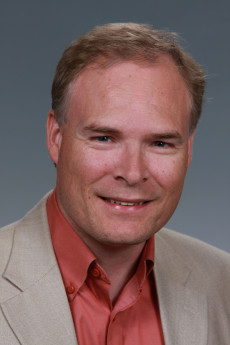Bert de Jong to Lead Scientific Computing Group
PNNL Computational Chemist Joins CRD in July
May 3, 2013
Contact: Jon Bashor, jbashor@lbl.gov, 510-501-2230

Bert de Jong has been named the new leader of the Scientific Computing Group in Berkeley Lab’s Computational Research Division (CRD).
Bert de Jong of the Pacific Northwest National Laboratory (PNNL) has been named the new leader of the Scientific Computing Group in Berkeley Lab’s Computational Research Division (CRD). De Jong will join Berkeley Lab on July 1.
At PNNL, de Jong leads the High Performance Software Development Group responsible for NWChem at the Environmental Molecular Sciences Laboratory (EMSL), a national scientific user facility providing integrated experimental and computational resources for environmental molecular science research.
“We were very impressed with Bert’s strong research track record in computational chemistry, as well as his excellent management skills as both group leader and acting associate director for molecular science computing,” said CRD Director David Brown. “With his leadership and experience, we are also looking forward to building stronger ties with the Berkeley Lab Chemical Sciences Division.”
The Scientific Computing Group advances scientific computing by developing and enhancing applications in key disciplines, as well as developing tools and libraries for addressing general problems in computational science. Group members work on diverse scientific applications in a variety of fields—including atmospheric modeling, materials/nanoscience, chemical sciences and biological sciences—that are relevant to Berkeley Lab and the U.S. Department of Energy.
“I’m looking forward to tapping into the strengths of Berkeley Lab, bringing together teams of application scientists, applied mathematicians and computer scientists to create scientific tools and applications that will help advance the science missions of LBNL and the Department of Energy,” de Jong said. “When you combine that with the high performance computing resources at LBNL, there’s tremendous potential for advancing scientific discovery.”
De Jong has a background in general chemistry, chemical engineering and high performance computational chemistry, with specialization and strong capabilities in modeling heavy element chemistry. He was a lead developer of the NWChem software at the EMSL, one of four developers of the unique fully relativistic software MOLFDIR for quantum chemistry, and contributed to the development of the fully relativistic software DIRAC, a relativistic ab initio quantum chemistry program.
He has published more than 70 journal papers, five conference papers and five book chapters and has given 40 invited presentations and lectures at international conferences and universities.
De Jong earned his doctorate in theoretical chemistry in 1998 from the University of Groningen in the Netherlands. He earned his master’s in chemistry from the University of Groningen in 1993 and his bachelor’s degree in chemical engineering from the Technical College of Leeuwarden, the Netherlands, in 1990. He was a postdoctoral fellow at PNNL before transitioning to a staff member in 2000.
About Berkeley Lab
Founded in 1931 on the belief that the biggest scientific challenges are best addressed by teams, Lawrence Berkeley National Laboratory and its scientists have been recognized with 16 Nobel Prizes. Today, Berkeley Lab researchers develop sustainable energy and environmental solutions, create useful new materials, advance the frontiers of computing, and probe the mysteries of life, matter, and the universe. Scientists from around the world rely on the Lab’s facilities for their own discovery science. Berkeley Lab is a multiprogram national laboratory, managed by the University of California for the U.S. Department of Energy’s Office of Science.
DOE’s Office of Science is the single largest supporter of basic research in the physical sciences in the United States, and is working to address some of the most pressing challenges of our time. For more information, please visit energy.gov/science.









